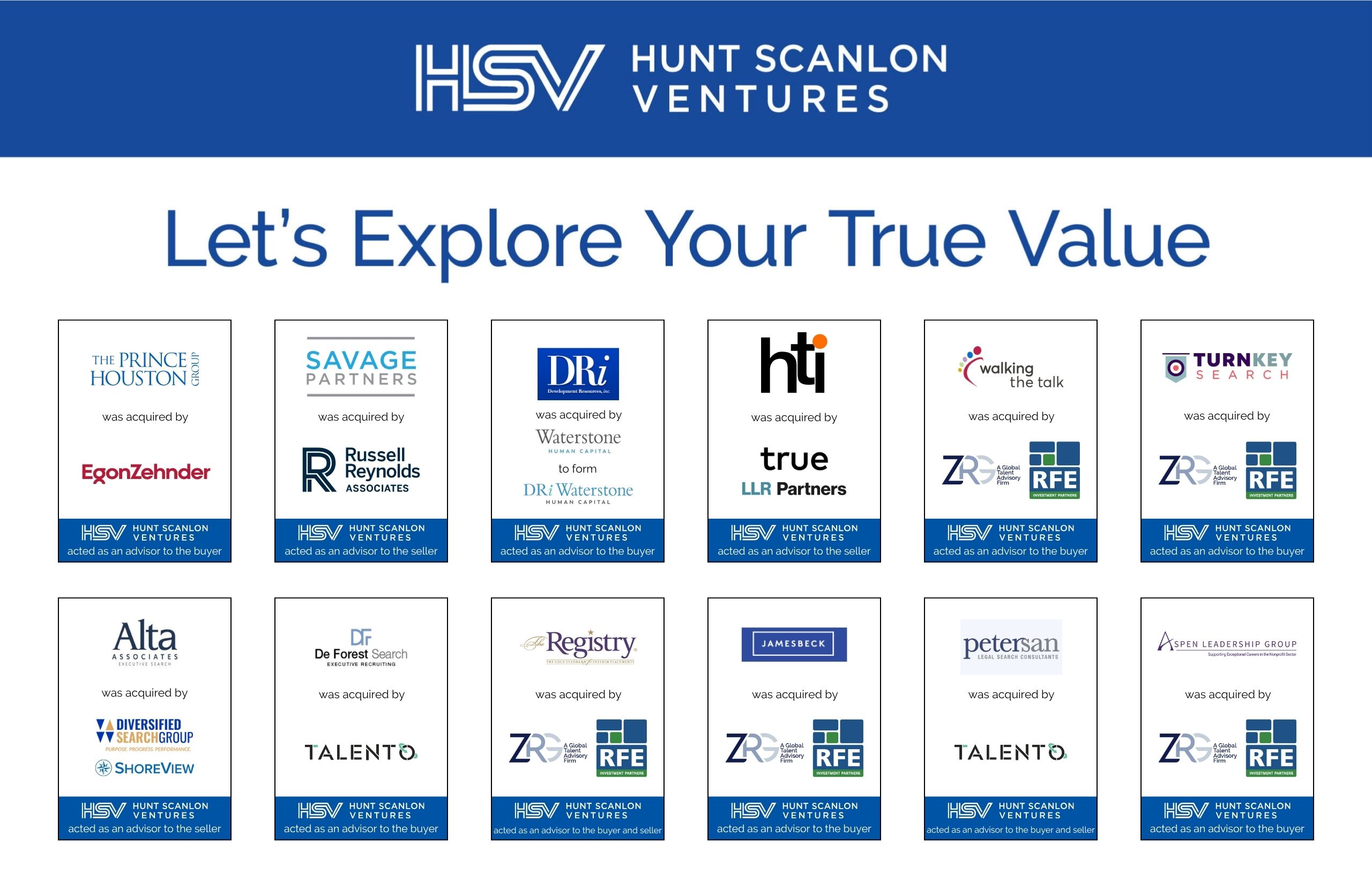The U.S. M&A market is entering a new phase, driven by shifting regulatory dynamics, economic expansion, and an increasing appetite for strategic transactions. Evan Berta, an Associate at Hunt Scanlon Ventures, examines how these forces are shaping dealmaking and human capital sector M&A.
The latest EY Merger Monthly forecasts an uptick in U.S. M&A activity, driven by favorable macroeconomic conditions, regulatory shifts, and an increasing appetite for strategic deals.
“U.S. M&A activity is expected to build further momentum in 2025,” the report notes, “driven by falling interest rates, strong economic expansion, substantial uninvested capital, and the imperative for business transformation.”
Despite concerns over regulatory scrutiny, EY predicts that dealmakers will benefit from a clearer policy environment. “With dealmakers having better clarity around the monetary and regulatory dynamics, there has been a significant rise in CEOs’ appetite to engage in M&A,” EY analysts concluded.
Record Deal Boom
Evan Berta, an Associate at Hunt Scanlon Ventures who closely tracks developments across the human capital M&A landscape, said that he has seen a demonstrable shift in transaction flows which will translate into a record boom in deals this year for the Greenwich, Conn-based global M&A advisory firm.
“We are seeing an increased flow of transactions emanating from a broader swathe of human capital providers,” he said. “Our internal market intelligence is now pointing to a broadening of the pipeline globally,” said Mr. Berta. “Buyers and sellers are re-engaging with more confidence than we have seen since 2022 when the sector was tearing the cover off the ball.”
“Buyers and sellers are re-engaging with more confidence than we have seen since 2022 when the sector was tearing the cover off the ball.”
The EY report notably addresses the influence of regulatory policies on dealmaking. “Much has been said about the new administration’s lenient regulatory policies leading to an uptick in M&A in 2025,” said the report. “However, the approach may not be as laissez-faire as seen in historical contexts,” it concluded.
Although regulatory scrutiny is expected to persist, the shift towards negotiated resolutions rather than outright deal rejections provides more flexibility for dealmakers. The number of M&A challenges by U.S. antitrust authorities remains comparable to previous administrations, said EY, suggesting a regulatory environment that is neither fully restrictive nor entirely permissive.
But several policy shifts are expected to shape M&A strategies in 2025, said EY. President Trump’s proposed extension of the 2017 Tax Cuts and Jobs Act (TCJA) could lower corporate tax rates, making U.S. companies more attractive acquisition targets.
Deal Drivers
Trade tariffs remain a complicating factor. EY noted that “96% of U.S. CEOs believe it’s crucial to reevaluate their organization’s transformation strategy in response to increasing geopolitical volatility and policy uncertainty.”
“Tariffs may increase costs for multinationals,” said Mr. Berta, “and that could create potential barriers to cross-border deals and prompt some chief executives and heads of corporate strategy to reconsider their global M&A strategies,” he said.
“Connecting it all is human capital – that is and will always be the critical driver of M&A success.”
Nevertheless, EY highlights several factors contributing to increased M&A activity in 2025. A pro-business agenda under the Trump administration is expected to encourage more corporate transactions. Lighter regulatory and tax policies, coupled with improved financing conditions from lower interest rates, will create a favorable dealmaking environment. And attractive M&A valuations, driven by a reduced cost of debt, will make acquisitions more financially viable.
The heavy focus on AI-driven data and digital transformation is also expected to fuel deal activity, as companies seek to enhance their technological capabilities through acquisitions.
“Connecting it all is human capital – that is and will always be the critical driver of M&A success,” said Mr. Berta.
Looking back over the last 15 to 20 human capital M&A transactions that Hunt Scanlon has brokered, he said, “the acquisitions we managed were not about bolting on a new technology or bolstering market share in a particular vertical. Instead, they were all about acquiring people and expertise. That’s where the lift comes from.” Leadership teams, said Mr. Berta, “must be 100% focused on integrating talent to effectively maximize deal value.”
“The biggest challenge post-M&A is often workforce alignment. Companies must have a strategy in place to retain top talent and foster a culture that supports the new organizational structure.”
Potential Risks & Challenges
Despite the optimistic tailwinds, the EY report cautions against potential headwinds. Uncertainty over federal government funding and debt ceiling negotiations could impact financial stability and deal confidence. Modifications to industrial policies, such as proposed changes to the Inflation Reduction Act, could also alter the investment landscape. And continued regulatory scrutiny in high-growth sectors such as technology and healthcare may slow down the approval process for major deals.
To be sure, 2025 is set to be a pivotal year for U.S. M&A. “Companies that proactively invest in leadership and recognize the value that talent and workforce integration bring will be best positioned for success in this evolving M&A climate,” said Mr. Berta. “As companies continue to assess market opportunities, those that proactively align their strategies with these trends will truly capitalize on this generational shift in market sentiment.
Article By

Evan Berta
Evan Berta is an Associate at Hunt Scanlon Ventures, specializing in data analysis, market mapping, and target list preparation. He plays a critical role in identifying and building out groups of firms in sectors of interest, including preparing strategic overviews of top potential targets for acquisitions. Evan’s analytical expertise supports the firm’s sourcing initiatives, particularly in identifying niche and emerging market opportunities, and delivering actionable insights on tight timelines.






